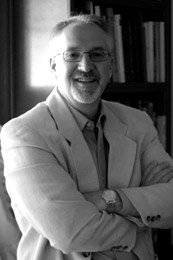Dirty Lenses
I’ve worn glasses since the third grade. At this point in my life, putting them on is the first thing I do in the morning, and taking them off is the last thing I do at night. My vision is so poor that my glasses are probably the most valuable items I will ever own. Believe me, I’ve gone through enough lens cleaning cloths to blanket a football field. Or so it seems.
People who wear corrective lenses will tell you how lost they’d be without them, and yet all of us—the clear-sighted and the vision-impaired—walk around every day with the dirty lenses of our biases, childhood experience, powerful advertising influences, and a vast assortment of other impediments to clarity.
Looking through dirty lenses, like perfectionism, or shame, leads to more insidious errors than simply having to work around smudged fingerprints on one’s glasses. These errors are the ones that often lead to emotional disturbance. Yet it’s easy to see that there are a lot of people walking around with some kind of impairment in their vision about themselves, others, the world, and the future!
We pick up a lot of smudges to the way we see things simply because our experience is limited to the world right around us as we’re growing up. One example is alcohol use. A child growing up in a home where parents, and parents’ friends drink often, and in great quantity, will be surprised at (and probably think there’s something odd about) the home of a friend where alcohol is not served at all. It might even be difficult for children raised in such different homes to become friends. So many of their impressions of the world would be influenced by an array of beliefs, attitudes, behaviors and even possessions related, closely or just loosely, to parental treatments of alcohol.
Most insidious, however, are the attitudes and beliefs that seem to be soaked up internally rather than observed, read, or heard in the outside world. Not all come from parents, of course, but many initial ones do. Racial stereotypes, ideas about gender and sexual activity, beliefs about societal norms for work, play, family life, or religion— are just a few of the topics about which attitudes are developed. Even “good” attitudes or “good” beliefs serve to cloud the lens of reality.
Seeing clearly is not just a matter of ignoring everything you may have learned in childhood, or through experience. It comes down to: 1) identifying the lenses you may be using; 2) assessing whether they seem rational, reasonable, and helpful in your life; 3) learning to view self, others and the future through other perspectives; and then 4) thinking your way through situations rather than relying on “gut instinct” and emotions. This is certainly harder than it sounds, because it is not simply our glasses that need to be cleaned but rather the emotion-laden responses learned and stored invisibly away as if they represent reality. Those are difficult to spot, even when we try. A great book for examining this material is in one I have my students read every few years, The Resilience Factor, by Karen Reivich and Andrew Shatte.
If you think of the stored beliefs, attitudes and experiences as filters, and that each experience you have is sifted through your particular filters as it’s being processed, you kind of get the idea despite the many mixed metaphors involved! This is why I try to slow myself down, especially when I am aware of resistance to an idea, to look at it through the cleanest lens or filter that I can. Even with great effort, I am aware that influences of past learning, past experience, and lots of totally forgotten beliefs generated from watching TV are still gently persuading me to see the world through dirty lenses. My only hope is to recognize my emotions, and use them effectively. That way, I MAY think more clearly, critically, and as “cleanly” as possible.

